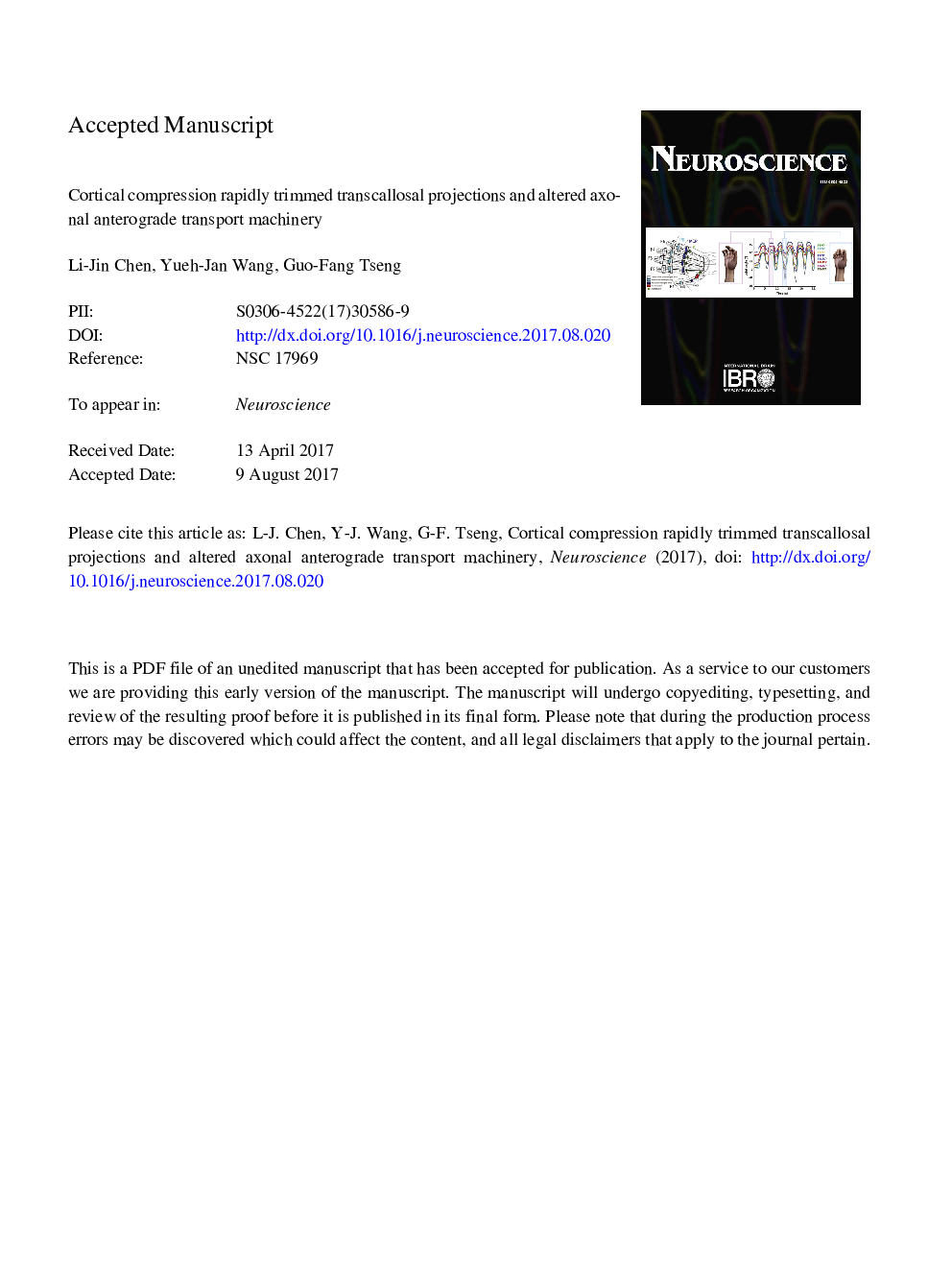| Article ID | Journal | Published Year | Pages | File Type |
|---|---|---|---|---|
| 5737365 | Neuroscience | 2017 | 57 Pages |
Abstract
Trauma and tumor compressing the brain distort underlying cortical neurons. Compressed cortical neurons remodel their dendrites instantly. The effects on axons however remain unclear. Using a rat epidural bead implantation model, we studied the effects of unilateral somatosensory cortical compression on its transcallosal projection and the reversibility of the changes following decompression. Compression reduced the density, branching profuseness and boutons of the projection axons in the contralateral homotopic cortex 1 week and 1 month post-compression. Projection fiber density was higher 1-month than 1-week post-compression, suggesting adaptive temporal changes. Compression reduced contralateral cortical synaptophysin, vesicular glutamate transporter 1 (VGLUT1) and postsynaptic density protein-95 (PSD95) expressions in a week and the first two marker proteins further by 1 month. βIII-tubulin and kinesin light chain (KLC) expressions in the corpus callosum (CC) where transcallosal axons traveled were also decreased. Kinesin heavy chain (KHC) level in CC was temporarily increased 1 week after compression. Decompression increased transcallosal axon density and branching profuseness to higher than sham while bouton density returned to sham levels. This was accompanied by restoration of synaptophysin, VGLUT1 and PSD95 expressions in the contralateral cortex of the 1-week, but not the 1-month, compression rats. Decompression restored βIII-tubulin, but not KLC and KHC expressions in CC. However, KLC and KHC expressions in the cell bodies of the layer II/III pyramidal neurons partially recovered. Our results show cerebral compression compromised cortical axonal outputs and reduced transcallosal projection. Some of these changes did not recover in long-term decompression.
Keywords
Corpus callosumKLCPSD95VGLUT1KHCRT-PCRGAPDHROIPBSphosphate buffervesicular glutamate transporter 1standard error of the meanKinesin light chainkinesin heavy chainDecompressionPhosphate-buffered salineSEMRegions Of InterestCortical pyramidal neuronpolymerase chain reactionreverse transcription polymerase chain reactionPCRpostsynaptic density protein-95Kinesinglyceraldehyde-3-phosphate dehydrogenase
Related Topics
Life Sciences
Neuroscience
Neuroscience (General)
Authors
Li-Jin Chen, Yueh-Jan Wang, Guo-Fang Tseng,
